Global Discoveries on DVD: Auteurist and Non-Auteurist Shopping Tips
By Jonathan Rosenbaum
If there’s any overarching lesson I learned from teaching film history to undergraduates over the past year in Richmond, Virginia (which, logistically speaking, is what obliged me to suspend this column for half a year), it’s that they know both less and more about history and film history than I did as an undergraduate back in the ‘60s. For a long time, it seemed like everything that teenagers knew about the past was more or less what they could glean from ordinary TV-watching. Today, thanks to the Internet, it seems like a great deal more is available, yet a good deal less is accessible if you don’t know where or how or even why to look for it—which means that, depending on their focus, North American students today are probably both brighter and dumber than their predecessors. And within my own frame of reference, the brighter ones tend to be the ones who have either travelled outside the US at some point or would at least like to.
I couldn’t begin to “catch up” on all the releases that I missed covering in some fashion since my last column in Fall 2010, but I hasten to add that this has always been the case. Quite apart from everything that gets sent to me, what I see and/or have something to say about is largely and inevitably a matter of both chance and access. Thanks to having been a member of Il Cinema Ritrovato’s DVD jury for the past few years, I’ve come across many items that I never would have heard of otherwise, but even when something gets sent to me, what I wind up spending more time with usually has a lot to do with pre-existing biases, mainly auteurist, as well as various kinds of supplementary information.
 Example #1 (auteurist): Far and away one of the very best box sets I know is Joris Ivens Collection: 1912-1988, from the European Foundation (Region 2), which I mentioned without having yet received a copy of in my 26th column. (If I haven’t lost track, this one is my 32nd.) But even after receiving and watching or sampling many portions of this five-disc set, it never occurred to me to look at Ivens’ odd and singular 20-minute Rotterdam Europoort (1966) until Kevin Lee recently returned from the Jeonju International Film Festival raving about the film, having just seen it as part of a lecture given there by Noël Burch.
Example #1 (auteurist): Far and away one of the very best box sets I know is Joris Ivens Collection: 1912-1988, from the European Foundation (Region 2), which I mentioned without having yet received a copy of in my 26th column. (If I haven’t lost track, this one is my 32nd.) But even after receiving and watching or sampling many portions of this five-disc set, it never occurred to me to look at Ivens’ odd and singular 20-minute Rotterdam Europoort (1966) until Kevin Lee recently returned from the Jeonju International Film Festival raving about the film, having just seen it as part of a lecture given there by Noël Burch.
 Example #2 (non-auteurist): It wasn’t until I started reading the brief English notes on the back of Filmmuseum München’s 2010 release Hal Roach: Female Comedy Teams that I knew anything about Roach’s efforts in the late ‘20s and early ‘30s to find female counterparts to Laurel and Hardy by trying to pair Marion Byron and Anita Garvin as a team and then Thelma Todd with ZaSu Pitts (the latter eventually replaced by Patsy Kelly), yielding what appears to be a very enjoyable two-disc set of a dozen restored two-reel shorts (so far, I’ve seen only one short by each pair).
Example #2 (non-auteurist): It wasn’t until I started reading the brief English notes on the back of Filmmuseum München’s 2010 release Hal Roach: Female Comedy Teams that I knew anything about Roach’s efforts in the late ‘20s and early ‘30s to find female counterparts to Laurel and Hardy by trying to pair Marion Byron and Anita Garvin as a team and then Thelma Todd with ZaSu Pitts (the latter eventually replaced by Patsy Kelly), yielding what appears to be a very enjoyable two-disc set of a dozen restored two-reel shorts (so far, I’ve seen only one short by each pair).
Bearing all this luck and arbitrariness in mind, what follows are some (mainly) auteurist discoveries and lessons I’ve been having recently:
 1. Almost 30 years after very favourably reviewing Michael Wadleigh’s only fiction feature, Wolfen (1981), for The Soho News and a couple of weeks after posting this review on my website, I re-saw this Manhattan-based horror thriller with Albert Finney and Diane Venora on a two-disc Warner Home Video package called Horror: 4 Film Favorites, where it’s included along with Abel Ferrara’s similarly ambitious, underrated and overlooked Body Snatchers (1993), as well as Michael Crichton’s expendable 1978 Coma and Eric Red’s 1996 Bad Moon (which I haven’t seen).
1. Almost 30 years after very favourably reviewing Michael Wadleigh’s only fiction feature, Wolfen (1981), for The Soho News and a couple of weeks after posting this review on my website, I re-saw this Manhattan-based horror thriller with Albert Finney and Diane Venora on a two-disc Warner Home Video package called Horror: 4 Film Favorites, where it’s included along with Abel Ferrara’s similarly ambitious, underrated and overlooked Body Snatchers (1993), as well as Michael Crichton’s expendable 1978 Coma and Eric Red’s 1996 Bad Moon (which I haven’t seen).
I continue to regard Wadleigh’s only previous feature, Woodstock (1970), as a visionary work—the only genuine city symphony of the counterculture—and what struck me in 1981 and again recently about Wolfen is how much it reflects the same grandiose ‘60s blend of leftist idealism, countercultural eclecticism, and big-screen (and multi-track audio) experimentation. Even after acknowledging that Wadleigh, who collaborated on the script of this adaptation of a Whitley Strieber novel, was replaced as director by John Hancock before the end of shooting, there are too many signs of his personal investment to dismiss this as a simple Hollywood hodgepodge. Like Woodstock itself, which contrived to somehow combine the visions of Man with a Movie Camera (1929) and Olympia (1938), Wolfen is a shotgun marriage of epic proportions, attempting to reconcile the suggestively ambiguous and arty moves and moods of Val Lewton and Jacques Tourneur’s Cat People (1942) and The Leopard Man (1943)—including similarly elliptical uses of parks, alleyways, zoos, and bedrooms—with the gargantuan allegorical conceits of M (1931) and Metropolis (1926), not to mention an echo or two of Riefenstahl’s Tiefland (1954), with its own mystical reverence for wolves. Even if, like so much of the best of ‘60s grandiosity, it never fully achieves narrative coherence, it’s an exhilarating head trip.
 2. Speaking of wolves and metaphysical allegories, Tian Zhuangzhuang’s The Warrior and the Wolf (2009), which Universal is bringing out on DVD and Blu-ray in the UK, is a bit of a letdown, especially in comparison to Tian’s previous feature, the 2004 documentary Delamu, also known as Tea-Horse Road Series (another Chinese-Japanese co-production, which remains woefully unavailable on DVD with English subtitles). I luckily got to see the latter film, about an ancient trade route between China’s Yunnan province and Tibet, on a big screen several years ago in Rotterdam. Maybe The Warrior and the Wolf would also look better on a big screen, but even then one would still be stuck with the plot, derived from a Japanese novel by Yasushi Inoue that, according to Tian in the “making-of” documentary, was given to him roughly two decades ago by Hou Hsiao-hsien, who suggested that he make a film from it. Both Warrior and Delamu show Tian’s considerable talent as a landscape artist with a special feeling for mountains—which was already apparent at least as early as Horse Thief (1988)—but otherwise they couldn’t be more different. While Delamu is both visually spectacular and modestly factual (the title refers to a donkey), The Warrior and the Wolf, a big-budget fantasy, has something to do with a Han Dynasty soldier (Japanese actor Jo Odagiri) repeatedly raping a war widow (American actress Maggie Q), who promptly falls in love with him after he stops her from drowning herself, even though the fact that he’s been fucking someone from another tribe eventually makes him turn into a wolf. Or something like that.
2. Speaking of wolves and metaphysical allegories, Tian Zhuangzhuang’s The Warrior and the Wolf (2009), which Universal is bringing out on DVD and Blu-ray in the UK, is a bit of a letdown, especially in comparison to Tian’s previous feature, the 2004 documentary Delamu, also known as Tea-Horse Road Series (another Chinese-Japanese co-production, which remains woefully unavailable on DVD with English subtitles). I luckily got to see the latter film, about an ancient trade route between China’s Yunnan province and Tibet, on a big screen several years ago in Rotterdam. Maybe The Warrior and the Wolf would also look better on a big screen, but even then one would still be stuck with the plot, derived from a Japanese novel by Yasushi Inoue that, according to Tian in the “making-of” documentary, was given to him roughly two decades ago by Hou Hsiao-hsien, who suggested that he make a film from it. Both Warrior and Delamu show Tian’s considerable talent as a landscape artist with a special feeling for mountains—which was already apparent at least as early as Horse Thief (1988)—but otherwise they couldn’t be more different. While Delamu is both visually spectacular and modestly factual (the title refers to a donkey), The Warrior and the Wolf, a big-budget fantasy, has something to do with a Han Dynasty soldier (Japanese actor Jo Odagiri) repeatedly raping a war widow (American actress Maggie Q), who promptly falls in love with him after he stops her from drowning herself, even though the fact that he’s been fucking someone from another tribe eventually makes him turn into a wolf. Or something like that.
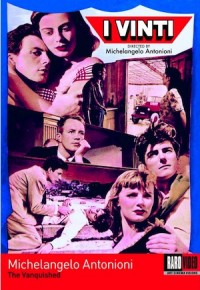 3. Three neglected early Antonioni features arrive from opposite sides of the Atlantic. From the North American side comes the especially neglected I Vinti (The Vanquished, 1953), with three separate episodes about alienated youth and murder in Paris, Rome, and London (the latter of which clearly anticipates the 1966 Blow-Up). This is the second American release from the superb Italian label Raro Video after their edition of Fellini’s The Clowns (1970), and the only minor quibble I have with either is the failure to acknowledge with sufficient clarity that the “rare short film” included as an extra on each DVD—Antonioni’s Tentato suicidio with I Vinti, Fellini’s Un Agenzia matrimoniale with The Clowns—are in fact separate sections belonging to the 1953 sketch feature L’amore in città (Love in the City).
3. Three neglected early Antonioni features arrive from opposite sides of the Atlantic. From the North American side comes the especially neglected I Vinti (The Vanquished, 1953), with three separate episodes about alienated youth and murder in Paris, Rome, and London (the latter of which clearly anticipates the 1966 Blow-Up). This is the second American release from the superb Italian label Raro Video after their edition of Fellini’s The Clowns (1970), and the only minor quibble I have with either is the failure to acknowledge with sufficient clarity that the “rare short film” included as an extra on each DVD—Antonioni’s Tentato suicidio with I Vinti, Fellini’s Un Agenzia matrimoniale with The Clowns—are in fact separate sections belonging to the 1953 sketch feature L’amore in città (Love in the City).
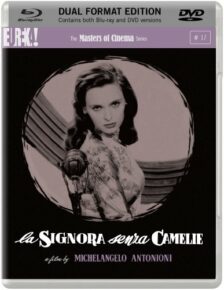 From the UK, Masters of Cinema offers two “dual format editions” (DVD + Blu-ray) of La Signora senza camelie (The Lady Without Camelias, 1953), an “inside” look at the Italian film industry, and Le Amiche (The Girlfriends, 1955), an adaptation of a Cesare Pavese novel—both HD transfers which include, among the helpful bonuses, informative interviews with Cinema Scope contributor Gabe Klinger about Antonioni in the ‘50s.
From the UK, Masters of Cinema offers two “dual format editions” (DVD + Blu-ray) of La Signora senza camelie (The Lady Without Camelias, 1953), an “inside” look at the Italian film industry, and Le Amiche (The Girlfriends, 1955), an adaptation of a Cesare Pavese novel—both HD transfers which include, among the helpful bonuses, informative interviews with Cinema Scope contributor Gabe Klinger about Antonioni in the ‘50s.
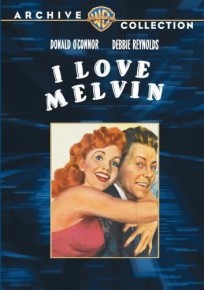 4. While waiting, perhaps in vain, for one of my two favourite Don Weis features, The Adventures of Hajji Baba (1954), to become available on a letterboxed DVD without French dubbing (unlike the ten-part letterboxed version that improbably turned up on YouTube), I can comfort myself with my other favourite, the euphoric and highly energetic musical I Love Melvin (1953), one of the four features Weis directed at MGM the previous year, which Warner Archive has recently made available “on demand.” Fans of Jacques Rivette’s Haut bas fragile (1995) who recall the delightfully amateurish dance number in a park pavilion with Marianne Denicourt and Bruno Todeschini can find its original inspiration here, in Donald O’Connor’s spectacularly professional roller-skate hoofing with Noreen Corcoran. Debbie Reynolds, who plays a football in another number, is no slouch either.
4. While waiting, perhaps in vain, for one of my two favourite Don Weis features, The Adventures of Hajji Baba (1954), to become available on a letterboxed DVD without French dubbing (unlike the ten-part letterboxed version that improbably turned up on YouTube), I can comfort myself with my other favourite, the euphoric and highly energetic musical I Love Melvin (1953), one of the four features Weis directed at MGM the previous year, which Warner Archive has recently made available “on demand.” Fans of Jacques Rivette’s Haut bas fragile (1995) who recall the delightfully amateurish dance number in a park pavilion with Marianne Denicourt and Bruno Todeschini can find its original inspiration here, in Donald O’Connor’s spectacularly professional roller-skate hoofing with Noreen Corcoran. Debbie Reynolds, who plays a football in another number, is no slouch either.
5. Sometimes the most notable things about new releases are the bonuses. For instance:
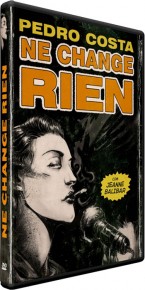 (a) The Portuguese DVD of Pedro Costa’s Ne change rien (2009), released by Midas Filmes, includes not only a supplementary CD of 13 songs by Jeanne Balibar, but also three songs not included in the film’s final cut (“Le tour du monde,” “A Safe Place,” and “Les petits papiers”), and, most intriguing of all, a very strange and very minimalist seven-minute film I’d never heard of before consisting of a single shot, The End of a Love Affair (2003), co-authored by Costa, visual artist Gustavo Sumpta, and choreographer João Fiadeiro.
(a) The Portuguese DVD of Pedro Costa’s Ne change rien (2009), released by Midas Filmes, includes not only a supplementary CD of 13 songs by Jeanne Balibar, but also three songs not included in the film’s final cut (“Le tour du monde,” “A Safe Place,” and “Les petits papiers”), and, most intriguing of all, a very strange and very minimalist seven-minute film I’d never heard of before consisting of a single shot, The End of a Love Affair (2003), co-authored by Costa, visual artist Gustavo Sumpta, and choreographer João Fiadeiro.
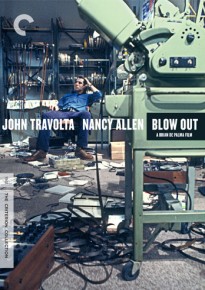 (b) Criterion’s DVD of Blow Out (1981) features both an hour-long interview with Brian De Palma by Noah Baumbach and De Palma’s very first feature, Murder à la Mod (1967), while the (to me) immensely more valuable Criterion release of Visconti’s Senso (1954) also includes—in addition to a Mark Rappaport essay and many other on-disc extras—the extremely scarce English-language version of the film, The Wanton Countess, on its second disc.
(b) Criterion’s DVD of Blow Out (1981) features both an hour-long interview with Brian De Palma by Noah Baumbach and De Palma’s very first feature, Murder à la Mod (1967), while the (to me) immensely more valuable Criterion release of Visconti’s Senso (1954) also includes—in addition to a Mark Rappaport essay and many other on-disc extras—the extremely scarce English-language version of the film, The Wanton Countess, on its second disc.
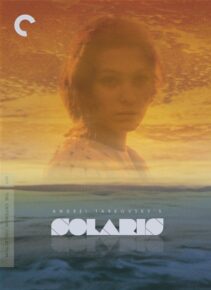 (c) The second disc in Criterion’s new two-disc edition of Tarkovsky’s Solaris (1972) has several important supplements that I’m just catching up with (already available on the 2002 DVD, and briefly noted in my second column), including terrific interviews with star Natalya Bondarchuk and cinematographer Vadim Yusov and “nine deleted and alternate scenes” that were discovered in the Russian film archive Gosfilmofond, all of them cut by Tarkovsky before the film went to Cannes. The interview with Bondarchuk is notable not only for many personal and poetic insights about Tarkovsky and his art, but also for a few glancing details about Bondarchuk herself, such as the passing detail that, as a child, she played Phoebe in an adaptation of The Catcher in the Rye (presumably an unauthorized stage version), and the more important fact that at the age of 13 she introduced Tarkovsky to the Stanislaw Lem novel, five years before she was eventually cast in the film.
(c) The second disc in Criterion’s new two-disc edition of Tarkovsky’s Solaris (1972) has several important supplements that I’m just catching up with (already available on the 2002 DVD, and briefly noted in my second column), including terrific interviews with star Natalya Bondarchuk and cinematographer Vadim Yusov and “nine deleted and alternate scenes” that were discovered in the Russian film archive Gosfilmofond, all of them cut by Tarkovsky before the film went to Cannes. The interview with Bondarchuk is notable not only for many personal and poetic insights about Tarkovsky and his art, but also for a few glancing details about Bondarchuk herself, such as the passing detail that, as a child, she played Phoebe in an adaptation of The Catcher in the Rye (presumably an unauthorized stage version), and the more important fact that at the age of 13 she introduced Tarkovsky to the Stanislaw Lem novel, five years before she was eventually cast in the film.
The Yusov interview includes many insights into Tarkovsky’s visual conceptions for the film, as well as his and Yusov’s initial reactions to 2001: A Space Odyssey (1968), which they saw shortly before they started shooting Solaris. Not surprisingly, they were impressed by the outer space sequences, which they knew they couldn’t rival technically, and couldn’t connect at all with the Dawn of Man prologue. Bearing this in mind (as well as Tarkovsky’s publicly expressed scorn for the Kubrick film), it isn’t too surprising that at least a couple of the more interesting deleted scenes, “Kris’s takeoff from Earth” and “Kris’s delirium/The mirror room,” are ones that show some faint resemblance to 2001.
 (d) Apichatpong Weerasethakul’s’s Syndromes and a Century (2006) is already available on DVD in North America from Strand Releasing. But if you opt for the lovely French edition (PAL, Region 2) on the Survivance label (its first release) you also get, with optional English subtitles, Apichatpong’s Luminous People, his 15-minute episode for State of the World (a 2007 feature that also included Costa’s Tarrafal and shorts by Chantal Akerman and Wang Bing, among others) and Diseases and a Hundred Year Period (2008), a film about Apichatpong’s skirmishes with (and responses to) the Thai censors by his assistant Sompot Chidgasornpongse. (The accompanying 24-page booklet—in French, like the subtitles with the feature—includes material by Apichatpong and Antony Fiant.)
(d) Apichatpong Weerasethakul’s’s Syndromes and a Century (2006) is already available on DVD in North America from Strand Releasing. But if you opt for the lovely French edition (PAL, Region 2) on the Survivance label (its first release) you also get, with optional English subtitles, Apichatpong’s Luminous People, his 15-minute episode for State of the World (a 2007 feature that also included Costa’s Tarrafal and shorts by Chantal Akerman and Wang Bing, among others) and Diseases and a Hundred Year Period (2008), a film about Apichatpong’s skirmishes with (and responses to) the Thai censors by his assistant Sompot Chidgasornpongse. (The accompanying 24-page booklet—in French, like the subtitles with the feature—includes material by Apichatpong and Antony Fiant.)
(e) Despite all its fascinating details, one problem I had with L’enfer d’Henri-Georges Clouzot (2009), the feature-length documentary by Serge Bromberg and Ruxandra Medrea about a cataclysmically out-of-control and never-finished 1964 feature, is that on one level it’s all extras, however ingeniously organized and ordered these fragments, accounts, and descriptions turn out to be. (It’s been a dozen years since Stuart Klawans’ highly entertaining and enlightening Film Follies: The Cinema Out of Order was published, and if a second edition is ever considered, L’enfer would clearly be a necessary inclusion.) But just as Clouzot’s folly turned out to be so maddening because it was all over the place, any attempt to convey this state of affairs in all its diverse manifestations runs the risk of courting the same sort of madness. And Flicker Alley’s edition of this 96-minute documentary (its first Blu-ray) raises the stakes still further by including a 57-minute bonus documentary, They Saw Inferno (2010), that goes over the same material from different angles and perspectives. But if you can’t get enough of this project, this is certainly for you. At least unlike some of Orson Welles’ films that he never quite completed—The Magnificent Ambersons (1942), Mr. Arkadin (1955), and Touch of Evil (1958)—this one can’t claim to have anything that even pretends to be a director’s cut (unless you’re counting the documentaries about it).
(f) Since I wrote the essay accompanying the Cinema Guild DVD of Shirin (2008) that was released last year, I wouldn’t normally be citing it here, but it does seem worth mentioning that the disc includes two Kiarostami shorts that are unavailable elsewhere, the 32-minute Roads of Kiarostami (2005) and the six-minute Rug (2006). And it’s worth adding that the first of these was the only Kiarostami film cited by Pierre Rissient in his short list for Film Comment of the best films of the previous decade.
 (g) Last but far from least: If, like me, you’ve been living recently in the sticks, the only way you could contemplate catching up with Guy and Madeline on a Park Bench (2010), Damien Chazelle’s black-and-white cinema vérité musical, was waiting for Cinema Guild’s DVD. Having just looked at this, literally within minutes after it materialized in my mailbox, I already know that I’ll be returning to it with pleasure many times. But I also expect to be coming back to some of the extras, because an early sampling of these already promises a treasure chest. There are not merely some wonderful deleted scenes—such as a very moving account by Jason Palmer/Guy of the auto accident that killed Clifford Brown, his piano player Richie Powell (Bud’s brother), and the latter’s wife—but two separate versions of the climactic musical number delivered in split screen and, even better, an elaborate documentation of the putting together of this number, all the way from its composition on the piano (an homage, in a way, to the composition of the score of Les Demoiselles de Rochefort [1967] by Michel Legrand and Jacques Demy on that film’s soundtrack CD) to various directorial annotations (one of which confirms that “Bye Bye Baby” from Gentlemen Prefer Blondes [1953] was one of the reference points) to the final dubbing-in of the taps. Amy Taubin’s essay on the film, also included, is both apt and perceptive.
(g) Last but far from least: If, like me, you’ve been living recently in the sticks, the only way you could contemplate catching up with Guy and Madeline on a Park Bench (2010), Damien Chazelle’s black-and-white cinema vérité musical, was waiting for Cinema Guild’s DVD. Having just looked at this, literally within minutes after it materialized in my mailbox, I already know that I’ll be returning to it with pleasure many times. But I also expect to be coming back to some of the extras, because an early sampling of these already promises a treasure chest. There are not merely some wonderful deleted scenes—such as a very moving account by Jason Palmer/Guy of the auto accident that killed Clifford Brown, his piano player Richie Powell (Bud’s brother), and the latter’s wife—but two separate versions of the climactic musical number delivered in split screen and, even better, an elaborate documentation of the putting together of this number, all the way from its composition on the piano (an homage, in a way, to the composition of the score of Les Demoiselles de Rochefort [1967] by Michel Legrand and Jacques Demy on that film’s soundtrack CD) to various directorial annotations (one of which confirms that “Bye Bye Baby” from Gentlemen Prefer Blondes [1953] was one of the reference points) to the final dubbing-in of the taps. Amy Taubin’s essay on the film, also included, is both apt and perceptive.
6. Among the films now becoming available for the first time “on demand” from Twentieth Century Fox Home Entertainment are the four MGM titles I requested screeners of: The Big Boodle (1956), a crime thriller with Errol Flynn, directed by Richard Wilson; Burn, Witch, Burn! (1962), an underrated English adaptation of Fritz Leiber’s fantasy novel Conjure Wife, scripted by Charles Beaumont and Richard Matheson and directed by Sidney Hayers; The Fearmakers (1958), a minor Cold War thriller directed by Jacques Tourneur and starring his drinking buddy Dana Andrews (who got him the job); and, best of all, Samuel Fuller’s favourite among his own pictures, Park Row (1952), about the history of early American yellow journalism in lower Manhattan, which he financed himself.
Speaking as someone who knew and loved Fuller over the last decade of his life, I was often puzzled by how he could combine such a grim view of humanity with such an intense enjoyment of life. I eventually came to feel that his view of humanity largely stemmed from his war experience, while his enjoyment of life largely came from his experience as a journalist. One might add that of his two most personal film projects, Park Row and The Big Red One (1980), which deal with these separate phases and experiences, the first came much closer to matching his dream about what it should have been than the second. I once had the privilege of watching this exuberant film with him during a Fuller retrospective that I programmed at the University of California, Santa Barbara, and can still recall his pleased and pithy comment afterwards: “Pretty unusual.”
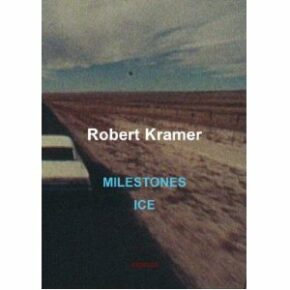 7. At the other end of the spectrum of American independent cinema are two epic countercultural features by the late Robert Kramer (1939-1999), Ice (1969) and Milestones (1975), released in a two-disc set last year by the enterprising new French publisher-distributor Capricci. For quite some time now, I’ve been intrigued by the fact that Kramer remains an untouchable leftist icon for the Cahiers du Cinéma crowd (whose former editor Emmanuel Burdeau now helps to run Capricci) while being virtually unknown in the US, which undoubtedly helps to explain why he moved to Paris from New York in 1980. (Bérénice Reynaud briefly touches on this issue in her lengthy introduction to the fourth volume of Cahiers du Cinéma in English, which also includes Serge Daney’s essay on Milestones, “The Aquarium.”)
7. At the other end of the spectrum of American independent cinema are two epic countercultural features by the late Robert Kramer (1939-1999), Ice (1969) and Milestones (1975), released in a two-disc set last year by the enterprising new French publisher-distributor Capricci. For quite some time now, I’ve been intrigued by the fact that Kramer remains an untouchable leftist icon for the Cahiers du Cinéma crowd (whose former editor Emmanuel Burdeau now helps to run Capricci) while being virtually unknown in the US, which undoubtedly helps to explain why he moved to Paris from New York in 1980. (Bérénice Reynaud briefly touches on this issue in her lengthy introduction to the fourth volume of Cahiers du Cinéma in English, which also includes Serge Daney’s essay on Milestones, “The Aquarium.”)
Having long considered Ice, which I discovered in Cannes and rediscovered in Paris’ Left Bank during the early ‘70s, an unforgettable historical marker of its period, I showed it to a few colleagues and students in Richmond last April, none of whom had much use for it as cinema—even though we all seemed to find it, wittingly or not, a devastating autocritique of its myopic milieu. Perhaps the traces of Alphaville (1965) and Rivette-like paranoia in this SF/contemporary look at underground activists helped to establish its French credentials, but I’m sure that the reasons for this cultural discrepancy are far more complicated. (In my 2000 essay about Daney, I speculate that the greater value placed by Americans on Rivette’s Out 1 [1971] stems from a similar desire to perceive “the awful truth” about the fate of ‘60s utopian ideals through the lens of a different country.)
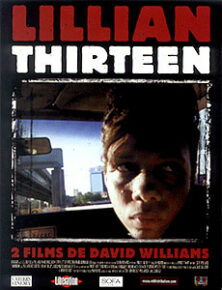 8. American independent cinema, continued: at the James River Film Festival in Richmond, where I presented Françoise Romand’s spellbinding first feature Mix-up (1985; available on DVD from Microcinema) to a large and very appreciative audience, I met for the first time the local independent filmmaker David Williams, a graduate of the first filmmaking class at Virginia Commonwealth University, where I’ve been teaching. Williams is perhaps best known for his own first feature, Lillian (1993), a rich and appealing fictionalized documentary narrated by and starring the title heroine, a middle-aged African-American who devotes her life to foster-parenting while taking care of three elderly adults in the same house. Williams may have a bit more of an American profile than Robert Kramer (see above), but the two-disc set of his work that he gave to me—including Lillian, its 1997 follow-up feature Thirteen, and seven previous shorts from the ‘80s, as well as a 60-page, bilingual illustrated booklet—happens to be French, and is available from www.eddistribution.com.
8. American independent cinema, continued: at the James River Film Festival in Richmond, where I presented Françoise Romand’s spellbinding first feature Mix-up (1985; available on DVD from Microcinema) to a large and very appreciative audience, I met for the first time the local independent filmmaker David Williams, a graduate of the first filmmaking class at Virginia Commonwealth University, where I’ve been teaching. Williams is perhaps best known for his own first feature, Lillian (1993), a rich and appealing fictionalized documentary narrated by and starring the title heroine, a middle-aged African-American who devotes her life to foster-parenting while taking care of three elderly adults in the same house. Williams may have a bit more of an American profile than Robert Kramer (see above), but the two-disc set of his work that he gave to me—including Lillian, its 1997 follow-up feature Thirteen, and seven previous shorts from the ‘80s, as well as a 60-page, bilingual illustrated booklet—happens to be French, and is available from www.eddistribution.com.
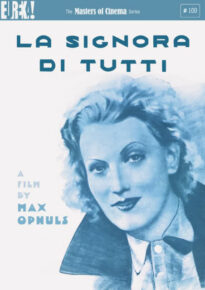 9. My favourite early Max Ophüls feature, La Signora di tutti (1934), can be had now from Masters of Cinema in the UK, along with a new half-hour audiovisual analysis by Tag Gallagher and a 44-page booklet that leads off with a new essay by Luc Moullet (translated by Craig Keller).
9. My favourite early Max Ophüls feature, La Signora di tutti (1934), can be had now from Masters of Cinema in the UK, along with a new half-hour audiovisual analysis by Tag Gallagher and a 44-page booklet that leads off with a new essay by Luc Moullet (translated by Craig Keller).
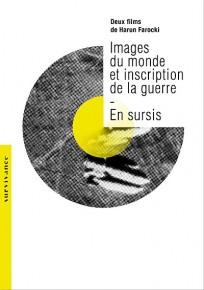 10. Also from the new French label Survivance, a very elegant two-disc set pairing one of Harun Farocki’s finest essay films, Images of the World and the Inscription of War (1988), with the clearly related Respite (2007), his silent, 40-minute contribution to the Jeonju International Film Festival’s annual digital commissions, both with optional English subtitles. The 52-page booklet, however, as well as an hour-long dialogue between Christa Blüminger and Sylvie Lindeperg about the two films, are only in French.
10. Also from the new French label Survivance, a very elegant two-disc set pairing one of Harun Farocki’s finest essay films, Images of the World and the Inscription of War (1988), with the clearly related Respite (2007), his silent, 40-minute contribution to the Jeonju International Film Festival’s annual digital commissions, both with optional English subtitles. The 52-page booklet, however, as well as an hour-long dialogue between Christa Blüminger and Sylvie Lindeperg about the two films, are only in French.
 11. Olive Films has been putting out a lot of older Hollywood films lately without any discernable selection process as related to quality. Thus it has recently made available three specimens of late Otto Preminger: Such Good Friends (1971), which I would call the best; Hurry Sundown (1967), the near-worst (topped, in my opinion, only by the terminally dull Rosebud [1975]); and, last but not least, the dubious but endlessly fascinating Skidoo (1968). In the New York Times recently, Dave Kehr gave higher marks than I would to Hurry Sundown for being the last of Preminger’s films “to be shot in the grand, classical style—long takes and elaborate camera movements—that he had been cultivating since his debut film in 1931.” But for me the grossness of the Southern stereotypes, including the patronizing treatment of the black characters (all the more egregious for being contemporary with the Civil Rights Movement), makes such qualities irrelevant. I also differ with Kehr’s ethical reading of Such Good Friends, which he cross-references with Daisy Kenyon (1947), while I go all the way back to Laura (1944); see my review of two recent Preminger biographies at jonathanrosenbaum.com/?p=26442 for why I make this linkage.
11. Olive Films has been putting out a lot of older Hollywood films lately without any discernable selection process as related to quality. Thus it has recently made available three specimens of late Otto Preminger: Such Good Friends (1971), which I would call the best; Hurry Sundown (1967), the near-worst (topped, in my opinion, only by the terminally dull Rosebud [1975]); and, last but not least, the dubious but endlessly fascinating Skidoo (1968). In the New York Times recently, Dave Kehr gave higher marks than I would to Hurry Sundown for being the last of Preminger’s films “to be shot in the grand, classical style—long takes and elaborate camera movements—that he had been cultivating since his debut film in 1931.” But for me the grossness of the Southern stereotypes, including the patronizing treatment of the black characters (all the more egregious for being contemporary with the Civil Rights Movement), makes such qualities irrelevant. I also differ with Kehr’s ethical reading of Such Good Friends, which he cross-references with Daisy Kenyon (1947), while I go all the way back to Laura (1944); see my review of two recent Preminger biographies at jonathanrosenbaum.com/?p=26442 for why I make this linkage.
Meanwhile, I’m delighted to report that Olive’s transfer of Skidoo, Preminger’s demented hippie musical and very personal satire about adult corruption, is triumphantly letterboxed, which is all the more apposite insofar as one of the film’s very first gags involves random, channel-surfing spurts of Preminger’s own In Harm’s Way (1965) in a pan-and-scan version. (Also coming soon from Olive: a pretty good 1965 adventure-allegory from Cy Endfield, Sands of the Kalahari, available on both DVD and Blu-ray.)
12. A six-disc Edgar G. Ulmer box set from France (Collection Hommage à), called simply Edgar G. Ulmer, makes me wonder yet again if attempting to collect Ulmer on DVD is a losing proposition. It seems weirdly appropriate (yet also uniquely frustrating) that the box itself should be hard to open, the individual discs hard to pry loose from the container and almost equally hard to put back securely, and that so many of the dozen items themselves—Damaged Lives (1933), Moon Over Harlem (1939), Goodbye, Mr. Germ (1940), Girls in Chains (1943), Bluebeard (1944), Strange Illusion (1945), Detour (1945), The Strange Woman (1946), So Young So Bad (1950), Daughter of Dr. Jekyll (1957), Beyond the Time Barrier (1960), and The Amazing Transparent Man (1960)—should be preceded by disclaimer titles apologizing for the godawfulness of the prints. Even so, there are some arguments to be made on behalf of this effort: on the box, attractive colour reproductions of posters for 11 of the 12 films (only Goodbye, Mr. Germ—a 14-minute short about tuberculosis with some interesting animation, and apparently the second of four shorts about TB that Ulmer made during this period—is unrepresented); an illustrated, 20-page booklet in French with an essay by Stéphane Bourgoin (who also introduces many of the films in French) and a filmography so detailed that it even makes room for the unlikelier silent pictures Ulmer claimed to have worked on; and, in some cases, better prints than I’ve seen on DVD elsewhere (including the one of Detour, which is no small benefit).
There’s also the mixed blessing, for me, of trying to reconcile hardcore auteurist retrieval systems with an aversion to bad movies that runs against the grain of so many fanboys who actually seem to prefer them to good movies. In Kings of the Bs: Working Within the Hollywood System, a 1975 critical anthology put together by Todd McCarthy and Charles Flynn, one can find both positions expressed regarding Girls in Chains. For the co-editors, this is “a classic women’s [sic] prison picture” whose clunky employment of intercut stock footage of Hoover Dam suddenly inspires them to exclaim, “Take that, Alain Resnais!”; for Myron Meisel, “Like most of Ulmer’s films, Girls in Chains can be reckoned terrible on any number of ordinary grounds, yet it cannot be dismissed as an ordinary film, full as it is of minor triumphs of indefatigable artistic spirit and extraordinary mise-en-scène, the visual element working overtime to compensate for the sagging plot line.” The manner in which Meisel’s sentence virtually mutates from abuse to celebration encapsulates a whole tradition of wishful criticism that a box set of this kind might alternately (or simultaneously) justify or refute. So, in other words, enter at your own risk.
13. The same might be said for a couple of older two-disc sets of television series that I recently ordered in an effort to retrieve some of Jacques Tourneur’s work that is largely not addressed in Chris Fujiwara’s otherwise definitive Jacques Tourneur: The Cinema of Nightfall: Northwest Passage (available from timelessvideo.com), which includes four 1958 Tourneur-directed episodes on the first disc; and The Barbara Stanwyck Show, Volume Two (from emmytvlegends.org), which includes five Tourneur-directed 1961 episodes, again on the first disc. So far I’ve seen only a couple of the Barbara Stanwyck episodes, both mediocre pieces of fodder that almost any journeyman could have directed—but hope springs eternal.
14. If I previously haven’t had much to report in this column about Mexican DVDs, this can be attributed to my lack of both Mexican and Spanish contacts. But my first visit to Mexico City this past spring, to serve on the jury of a new festival (International Film Festival of the National Autonomus University of Mexico City, or FICUNAM for short), yielded a handful of archival DVDs from the Filmoteca de la UNAM. Two of these, both unsubtitled, have fairly self-explanatory titles even if you don’t known Spanish: Superocheros: Antologia del Súper 8 en México (1970-1986), with a selection that runs the gamut from hippie experiments to agitprop to art-world documentation; and La Historia en la Mirada: Testimonios Fílmicos de la Revolución Mexicana, a 2010 documentary of archival footage from the teens. Perhaps the most interesting is an item from the same era as the latter, which I’ve scarcely begun to sample, and which is outfitted with optional subtitles (English, French, and Spanish): Enrique Rosas’ El Automóvil Gris (The Grey Automobile), a 1933 sound version of a 1919 crime thriller that sounds like a Mexican variant of a Feuillade serial, based on the real-life exploits of a gang that terrorized Mexico City’s high society in 1915 with murder, robbery, and kidnapping.
 15. I’m still trying to figure out what I think about Nicholas Ray’s King of Kings (1961), recently released by Warners on Blu-ray. While trying to reconcile the attractive rectangular compositions with the kitschier aspects, I also reflect on why Orson Welles went out of his way to refuse any screen credit for his extended voiceover in the film. More precisely, why was he so openly scornful of both Ray and Vincente Minnelli in his interviews? Perhaps for the same reason that he never seemed to acknowledge the talent or importance of Fritz Lang (which, the late David Overbey informed me, Lang was more than a little pissed off about, especially considering the likely indebtedness of Citizen Kane’s editing principles to M): namely, that all three of these directors had John Houseman as a producer after he and Welles had acrimoniously parted ways. As far as I know, Welles never had anything complimentary to say about any of the subsequent directors who worked with Houseman (a list that also includes Max Ophüls, Joseph L. Mankiewicz, Robert Wise, and John Frankenheimer, among others). In any case, this is only a theory.
15. I’m still trying to figure out what I think about Nicholas Ray’s King of Kings (1961), recently released by Warners on Blu-ray. While trying to reconcile the attractive rectangular compositions with the kitschier aspects, I also reflect on why Orson Welles went out of his way to refuse any screen credit for his extended voiceover in the film. More precisely, why was he so openly scornful of both Ray and Vincente Minnelli in his interviews? Perhaps for the same reason that he never seemed to acknowledge the talent or importance of Fritz Lang (which, the late David Overbey informed me, Lang was more than a little pissed off about, especially considering the likely indebtedness of Citizen Kane’s editing principles to M): namely, that all three of these directors had John Houseman as a producer after he and Welles had acrimoniously parted ways. As far as I know, Welles never had anything complimentary to say about any of the subsequent directors who worked with Houseman (a list that also includes Max Ophüls, Joseph L. Mankiewicz, Robert Wise, and John Frankenheimer, among others). In any case, this is only a theory.
16. Thanks to my auteurist training, I stayed away from Vittorio De Sica’s Marriage Italian Style (1964) for almost half a century until a four-disc Sophia Loren Award Collection from Lorber Films turned up in my mailbox. Finding this serious comedy a lot better than I expected it to be (for Marcello Mastroianni as well as Loren, and for the script by Eduardo De Filippo and Renato Castellani as well as De Sica’s direction), I went on to look at Vittorio D., a recent (2009) and informative feature-length documentary portrait of De Sica that’s packaged with the 1963 Yesterday, Today and Tomorrow. (The third and final De Sica-Loren-Mastroianni opus included here is the 1970 Sunflower.)
17. Although I still haven’t seen any of the films made by the prolific Bill Mousoulis, the enterprising Australian who helped to found Senses of Cinema, you can purchase a heap of them, almost two dozen, at innersense.com.au/productions/mousoulis/dvds.html.
Jonathan Rosenbaum

